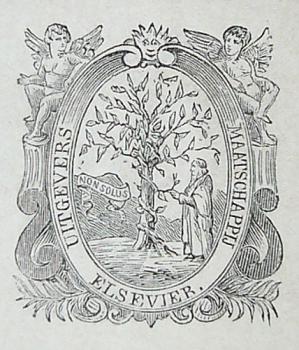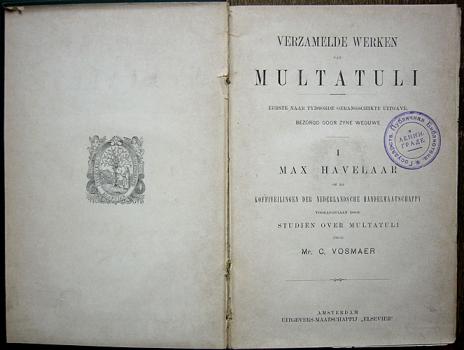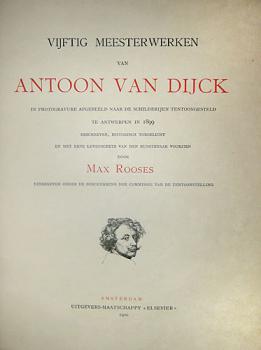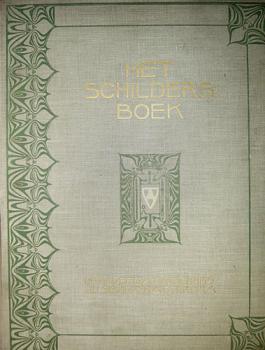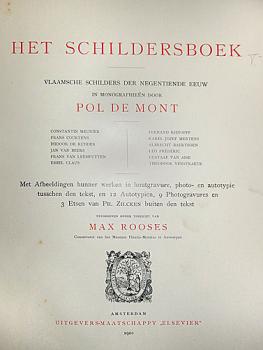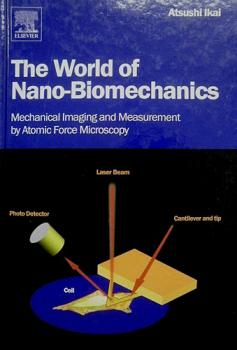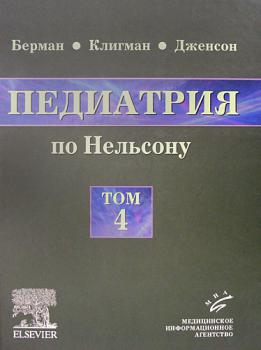Five Centuries of History of Elsevier in the National Library of Russia
From Book-printing to an Information Provider
The book exhibition "Five Centuries of History of Elsevier in the NLR: from Book-printing to an Information Provider" was open at our library on 20 September as part of the celebrations of the Year of Elsevier in the National Library of Russia.
The exhibition features about 300 printed books in Russian and foreign languages, 100 titles of serials and periodicals on art and culture, socio-economic and political sciences, engineering and medicine from the collections of the NLR.
The Imperial Public Library, now the National Library of Russia, has collected publications of the celebrated publishing house since the late 18th century. Our library holdings currently contain more than 6 000 Elzevier volumes from the late 16th - early 18th centuries, of which 4 700 items are housed in the Rare Books Department. Subsequently, throughout its history, the National Library continued to accumulate the most important publications issued by this firm as well as other famous publishers that are now part of the Elsevier group: North Holland, Excerpta Medica, Pergamon Press, Mosby, Saunders, Academic Press etc. Publications of these companies have always been a priority for the NLR.
The history of the famous Dutch Elsevier press began in the 16th century, when in 1580, the Dutchman Lowys Elsevier (1583-1652) founded the House of Elzevir, a printing and publishing company. The Elsevier family produced books in large editions, often making them into a series of cheap pocket volums that were intended for the new reader, appeared in Holland in the 16 century. Nice and simple font for the small size publications, developed in their printing shop and called Elsevier, has been applied up to the present time. They introduced formats equal to one sixteenth and one twenty fourth the size of the full sheet, which were unusually small for that time. An especially interesting innovation of the family is one-twelfth size, which looks stretched out or elongated. It is simply referred to as the Elsevier format. The decrease in size led to the price reduction and contributed to the increase of editions. Not only feudal lords and the clergy, even the common people of modest means, the "third estate", could afford to buy books.
Contemporaries regarded it as a real revolution in the book market. In order to hold books, "the pockets for books" were invented for clothing. That is why, it is considered that Elsevier began the era of the pocket book.
The modern Elsevier company was established in 1880 by the Dutch bookseller Jacob George Robbers, who was rather a bibliophile than a businessman. Like the Elseviers, he also wanted to publish classics for those who are interested in them. In addition to the name, he adopted the original Elzevir printer’s mark, stamping his new products with it. The emblem depicts a philosopher plucked grapes from a vine entwined around the trunk of an elm tree, under which is inscribed the motto Non Solus (Not Alone). The logo was first introduced by Isaac Elzevir, the son of Lowys, in 1620 in Leiden. There are several different interpretations of this picture: according to one of them, it symbolizes the close relationship between publisher and scholar. Publishers, like the elm tree, are needed to provide support for scholars, just as scholars, like the vine, are needed to produce fruit. Authors and publishers cannot do it alone and need each other: they are interdependent.
1880-1933
In the first fifty years of its existence from 1880 to 1933, Elsevier was a very small publisher, and its staff consisted of no more than ten people. It mostly published fiction, art albums, monographs on the history of the Dutch language and literature. The young company’s great success was obtaining the Dutch rights to Jules Verne’s Illustrated Travels in 57 volumes.
The exhibition features a number of books issued by the Elsevier publishing house in that period. First, we would like to mention the ten volume collection of works by one of the leading Dutch writer Eduard Douwes Dekker / 1820 - 1887 /, better known by his pen name Multatuli / Verzamelde Werken van Multatuli. Vol. 1-10. Amsterdam, 1888-1889 /. One of his novels, "Max Havelaar", in which he denounced the colonial policies of the Netherlands, was proclaimed in 2002 by the Society for Dutch Literature as "the greatest piece of all time, written in Dutch".
In 1900 the publisher "Elsevier", the well-known Belgian art historian, curator of the Plantin-Moretus Museum Max Roose released an album Fifty Masterpieces of Anthony van Dyck in Photogravure: Selected from the Pictures Exhibited at Antwerp in 1899 / Rooses Max. Vijftig Meesterwerken van Antoon van Dijck in photogravure afgebeeld naar de schilderijen tentoongesteld te Antwerpen in 1899 /.
This edition includes reproductions of the paintings by the prominent Flemish artist, which were presented at the jubilee exhibition, held in Antwerp in 1899 and dedicated to the 300th anniversary of his birth. A picture from Hermitage collection was also displayed at this exhibition. It was a portrait of Philip, Lord Wharton, acquired by Russian Empress Catherine II. For us, this publication is interesting for another reason as well: the item, that kept at the National Library of Russia, was printed on Japanese paper, signed by the chairman of the exhibition committee and numbered. The NLR houses copy number five.
An equally gripping series is dedicated to the Flemish and Dutch painting of the 19th century. Four volumes of this fundamental and well-illustrated publication tell about the Dutch artists of that time and have the same name - Book on Artists. Dutch Painters of the Nineteenth Century in Studies of Contemporaries / Het Schildersboek. Nederlandische schilders der negentiende eeuw in monographieen door tijdgenooten uitgegeven onder toezicht van Max Rooses. Amsterdam, 1898-1900/. The fifth book of the series covers Flemish masters, and written by the famous Belgian writer and poet Charles Paul de Monte Book on Artists. Flemish Painters of the Nineteenth Century in the Monograph by Paul de Monte / Het Schildersboek. Vlaamsche schilders der negentiende eeuw in monographieen door Pol de Mont. Amsterdam, 1901/
1933-1970
In 1930 the company was among the first to translate German scientific texts and textbooks in English. In 1937, it published one of the first books in English - Organic Chemistry by the chemist Paul Karrer that was an English translation of the famous textbook Lehrbuch der Organischen Chemie / Karrer P. Organic Chemistry. 3th ed. New York-Amsterdam: Elsevier, 1947 /. In the same year, the scientist was awarded the Nobel Peace Prize for his research in the field of carotinoids, flavins and vitamins A and B2. Consequently, Elsevier has gained a reputation as a printing house, publishing scientific texts in English. The firm intended a further publication in English - Encyclopedia of Organic Chemistry which should have been contained articles by scientists from various countries. In this period, the publishing house moved toward the global level: it established an office in the United Kingdom in 1939. Another office was planned to open in America, but these plans were not carried out in the next 20 years. In May 1940, German troops crossed the border of the Netherlands. During the war, the work of the publishing house was actually stopped due to restrictions imposed by the Hitler regime, and because many scientists emigrated from Europe to the United States.
After the war, "brain drain" from West Germany to the United States and other countries continued. An intellectual landscape has changed. The main centre of scientific thought has moved from German to the United Kingdom and the United States. Elsevier, already being an international publisher, found its niche in the global market. The publisher had sufficient cultural potential, and besides that, it was located in the heart of Europe. Netherlands, with their history of scientific publications and geographical location, became an ideal base for a new stage in the development of international publishing.
In the postwar period, Elsevier developed a new area of publishing international scientific journals. In 1947, it introduced the first international scientific journal in the field of biochemistry and biophysics - Biochimica et Biophysica Acta (the NLR received it from 1947 (Vol.1) to 1997). And now it is one of the most respected publications of Elsevier.
In the 1950s, Elsevier and the other Dutch publishers «North Holland» created a collection of major scientific journals: Ananlytica Chimica Acta (the NLR received it from 1947 (Vol.1) to 1973), Clinica Chimica Acta (the NLR received it from 1956 (Vol.1) to 1990), Wear (the NLR received it from 1957 (Vol.1) to 2005), Nuclear Physics (the NLR received it from 1956 (Vol.1) to 1992) and others. In 1961, the publisher opened a branch in the United Kingdom, and in 1962 - in the United States.
1970-1980
During this period, responding to a global economic crisis, a number of publishing companies of different countries joined forces. Thus a decade of mergers for Elsevier started. In 1970, it merged with North Holland. Next, in 1971, came a merger with Excerpta Medica, an international medical publisher in business since the 1940s. The most important product of this publishing house was EMBASE, the largest database of abstracts of medical publications in all languages. This database Elsevier launched in 1972 as its first project in the field of information technology. Elsevier, North Holland and Excerpta Medica were the first providers of international scientific and medical information.
The new publishing group acted successfully in the United States. In the 1970s, Elsevier launched the world-renowned journal Gastroenterology (since this year it has published also in Russian) and several other journals in the fields of clinical medicine, representing the works of major scientific associations of the United States. Whereas formerly such scientific journals as Brain Research, Artificial Intelligence, Nuclear Physics had circulations of 1 500-2 000, the company’s new medical society journals had circulations of 15 000 - 30 000. These large-scale journals sold advertising space to pharmaceutical companies, and Elsevier gained new opportunities that help built a reputation for the company as the world's leading publisher in the field of clinical medicine.
The company was expanding rapidly. Elsevier established its French office in Paris, published the journals of the renowned Institut Pasteur. Today, the French branch of the company is best known for its publications of Encyclopedie Medico-Chirurgicale, a multi-volume series that is subscribed to by over 100,000 French doctors. During this period, the company developed a "let a thousand flowers bloom" policy, encouraging many research electronic projects which later bore fruit.
As early as 1979, an new journal distribution project Adonis was developed. But it was too expensive for the time. Years later, this project was implemented in the most modern information technologies.
Revolution: From 1990 into the New Millennium
In 1991, Elsevier acquired «Pergamon Press», the publishing house founded in 1948. Among its publications are many prestigious journals, for example, Tetrahedron (the NLR received it from 1957 (Vol.1) to 2006) and Tetrahedron Letters (it have entered our library since 1959) and major international reference sources: The International Encyclopedia of Education and The Encyclopedia of Material Sciences and Engineering. (The NLR held The International Encyclopedia of Education. Vol. 1-10. Ed.-in-chief T. Husen . Oxford: Pergamon Press, 1985-1989 .)
The renowned medical journal Lancet, establisheded in 1823 by the independent physician Thomas Wakely, has been owned by Elsevier since the same year. For its 160-year history, the journal has remained in the forefront of the publications on discoveries in medical sciences - from penicillin in 1940 to HIV infection in 1984. (The NLR has received The Lancet from 1864 to present.)
At the same time, Elsevier merged with the publishing company Reed. At the beginning of 2000, the famous publisher Cell Press founded in 1974, issuing the journal Cell, was included in the Elsevier group. This journal along with other publications in the field of biology have become a valuable contribution to the collection of Elsevier, and strengthened his reputation. Now, Elsevier also possesses such presses as Mosby (founded in 1906), Saunders (founded in 1888 in Philadelphia), Academic Press (founded in 1942 in the United States), Churchill Livingstone (established in 1728 in London), publishing books on medicine. The holdings of our library contain essential publications of all these companies, for example:
- Gray's Anatomy: the Anatomical Basis of Clinical Practice. 39th ed. Ed. Standring S. Edinburgh: Elsevier Churchill Livingstone, 2005 /) (first published in 1858);
- The Harriet Lane Handbook: a Manual for Pediatric House Officers. / 17th ed. Ed. Robertson J. Philadelphia: Elsevier Mosby, 2005 / ;
- Harriet Robbins and Cotran Pathologic Basis of Desease. / 7th ed. Philadelphia: Elsevier Saunders, 2005 / ;
- Cecil Textbook of Medicine. / 22th ed. Philadelphia: Saunders, 2004 /
After a period of restructuring, Elsevier changed into a major international publisher with a single structure, combining not only resources but also knowledge and experience. At the end of the 1990s, Elsevier made a technological breakthrough that was called "the second Gutenberg revolution": it started publishing electronic editions.
From 1991 to 1995, Elsevier managed the TULIP project, aimed at the electronic distribution of journals to universities. Initially the project delivered 42 journals, which were published by Elsevier and Pergamon Press, to nine U.S. university libraries, but the number of titles grew to 80 by the end of the experiment. It was an innovation, which subsequently led to the creation of databases: Elsevier Electronic Subscriptions and then the modern ScienceDirect. Designed in 1997 to meet the needs of the scientific, educational, commercial and government organizations for multi-thematic information, the platform ScienceDirect offers comprehensive coverage of literature from all areas of science, providing access to more than 2500 titles of journals and more than 6000 books from the collection of the publishing house Elsevier as well as the vast number of journals published by prestigious scientific associations. In addition, the system CrossRef facilitates the links between content of materials from Science, Technology and Medicine disciplines, issued by more than 1000 other publishers.
The intuitively comprehensible interface provides researchers with access to more than 9.5 million full texts in PDF and HTML, and provides hyperlinks to a number of scientific, technical and medical articles on platforms of other publishers. Today, ScienceDirect is available in more than 70 countries worldwide. Several million articles are downloaded every month, the content of the platform is updated daily. ScienceDirect is the most effective and complete electronic interactive system that allows users to find and analyze high quality scientific, technical and medical information.
Elsevier has recently launched a new electronic product Scopus, the largest abstract and reference database in the world, covering more than 36 million records. Approximately 2 million records of publications, more than 17 000 scientific, technical and medical journal titles from about 4000 international publishers are added to Scopus each year. The daily updated database includes the content of journals from the leading scientific publishers back to the first volume or the first issue. It provides unparalleled support in the search for scientific publications and provides links to all published citations from the vast amount of available articles.
More than 300 researchers and librarians from over 20 institutions worldwide were involved in creating this research tool. Designers and builders of the database responsible for its content had to explore a vast range of sources to select only the highest quality scientific literature, including publications in open access, works of scientific conferences, as well as materials that are available only in electronic form.
But it is clear to the publisher that the second revolution of Gutenberg has just begun: an innovation is already outdated before it is even introduced, so it is necessary to seek for new solutions. Elsevier's objective is to experiment and move forward.
Today, Elsevier is the world's largest publisher of scientific, technical and medical literature, with its headquarters based in Amsterdam. The publishing house employs 7,000 people across 24 countries. Its publishing products and services, including books, magazines, electronic versions of publications, and databases, amount to over 20 thousand.
The exhibition features a wide range of the current literature by the publisher on a variety of disciplines.
On display are more than 50 publications by Elsevier in such key economic areas as marketing, econometrics, microeconomics and macroeconomics, management of organizations and enterprises, sociology, international economic relations.
For instance, Finance Director's Handbook, 2008 introduces readers to extensive information on all types of financial operations that a Finance Director of a modern enterprise undertakes. Special sections of the reference manual are devoted to audit, cash flow management, corporate transactions, financial reporting, taxation and treasury. This publication is written by professionals for professionals so that the information was easily accessed, understood and used.
The economy in the world today is extremely complex. A large amount of information sources in printed and in electronic form give the modern users the opportunity to find any information without difficulty. The book Critical Management Perspectives on Information Systems, 2009 about important aspects of information systems covers the organizational issues of information systems in theory, method and practice. Combining the freshest and valuable contributions from leading researchers in this field, this book illustrates the diversity of approaches to critical research, presents practical examples and demonstrates the lessons learnt from applying a critical approach.
In a time of growing globalization and competition, many firms seek to achieve success in all aspects of economic activity. Some firms have all the necessary resources in place, while others are forced to consider collaborating with other companies. The purpose of the monograph Controlling Collaboration between Firms, 2008 is to explain the challenges that these new, collaborative forms of organisation generate with reference to how management control systems and accounting information exchanges are practised and designed at an inter-organisational level.
Elsevier has traditionally been regarded as the world's largest publisher of scientific and technical literature. Book production and information services by the publisher in this field of knowledge illustrate the most advanced and modern branch of engineering: information security, ecology of the environment, nanotechnology and energy.
As a direct result of human activities, thousands of inorganic and organic chemicals and their metabolites enter the the biosphere daily. Many of these chemicals bring serious damage to vulnerable species of natural resources, crops, livestock, and, most importantly, cause great harm to human health. The most dangerous of these environmentally harmful chemicals are the focus of Eisler's Encyclopedia of Environmentally Hazardous Priority Chemicals, 2007. For each group of chemicals, information is presented on physical and chemical properties, lethal and sublethal effects, their influence on survival, growth, reproduction, carcinogenicity, and teratogenicity. The book proposes normative criteria for the protection of sensitive natural and agricultural crops, animal and human health.
The exhibition pays attention to publications on information security in today's world, which is achieved through a mix of technical, organizational and legal measures. These may include the use of cryptography, the hierarchical modeling of organizations in order to assure confidentiality, or the distribution of responsibility among interested parties. The book History of Information Security, 2007 covers such subjects as computer security standards, viruses on the Internet, free software, and describes computer crimes, regulations for encryption software.
Elsevier does not avoid the most fashionable subject today - nanotechnology and their application in various fields of knowledge. In the monograph The World of Nano-biomechanics. Mechanical Imaging and Measurement by Atomic Force Microscopy, 2008, the Japanese researcher A. Ikai explores the physical properties of the life supporting structures from the molecular level with a special emphasis on their designs based on the mechanical strength and flexibility, membrane and other biological nanostructures. The book examines the mechanical features of proteins, DNA, cell membrane and other biological nanostructures. The monograph explains the basic concepts needed to understand and perform experimental work. The book Nanocomposite Structures and Dispersions. Science and Nanotechnology - Fundamental Principles and Colloidal Particles, /2007 / by Capek I. is concerned with the interesting field of nanoscience based on polymer and metal colloidal nanoparticles. It describes in detail terms, definitions, theories, experiments, and techniques dealing with synthesis of polymer and metal particles.
Today Elsevier is the world's largest publishing holding on medicine, which consolidate dozens of famous companies such as Academic Press, Churchill Livingstone, Mosby, Saunders etc. It produces about 7 million titles of handbooks and clinical guidelines, textbooks, atlases, and periodicals (mainly in English) embracing all areas of modern medical science, clinical practice and health services.
The Atlas of Cosmetic Surgery / Kaminger M. Atlas of Cosmetic Surgery with DVD, 2009 / covers a vast range of surgical and medical aspects of cosmetic dermatology: including laser resurfacing, chemical peels, blepharoplasty, hair transplantation, hair removal. Dr. Kaminger along with co-authors provided detailed descriptions of the most widely used techniques in today’s cosmetic dermatology with the help of high resolution photographs, numerous diagrams and charts. An accompanying DVD presents 60 step-by-step video clips demonstrating procedures described in the atlas.
Elsevier pays special attention to books on pediatrics. The exhibition includes several publications on this topic. The unique Atlas of Pediatric Laparoscopy and Thoracoscopy with CD-ROM, 2008 offers the latest information on modern endoscopic approaches to pediatric surgery. A DVD, included in the atlas, contains 34 video clips of key endoscopic procedures. A Practice of Anesthesia for Infants and Children, 2008 focuses on the very latest advances in the field of pharmacology, pediatric anesthesiology, pediatric calculators, the latest developments in the field of pediatric anesthesiology in the world.
The famous series of Frank Netter's books on medicine is represented in the exhibition by the publication Netter's Obstetrics and Gynecology, 2008, the pages of which give detailed information on the tactics of managing patients both in a well-equipped hospitals, and under conditions of restricted access to medical resources. 250 illustration in the handbook have clinical orientation and are very valuable for students and practitioners. All anatomical terms are given in Latin, according to International Anatomical Nomenclature.
Russian Translations
Since 2007, the publishing house Elsevier along with with Russia's leading medical publishers GEOTAR Media, MEDpress-Inform, MIA (Medical Information Agency), Prakticheskaya medicina (Practical Medicine), Logosphere, and others produced their key books in Russian. Chief domestic medical specialists and professors of Russian universities participate in the preparation of the books.
These publications are represented at the exhibition in the section "Russian Translations".
An ambitious project to translate the books of one of the most famous medical series by Elsevier Procedures in Cosmetic Dermatology became possible in 2009 thanks to the professionalism of the publishing house Elsevier. Each book in this series is a practical guide to one of the areas of plastic surgery and cosmetology. An editor of each book is a prominent expert in the appropriate field. After getting acquainted with these publications, medical professionals will be able to carry out the procedure as described in the manuals. The exhibition features just some of the books in this series: Blepharoplasty, Hair Transplantation, Advanced Face Lifting, Treatment of Leg Veins, Chemical Peels, Liposuction, Botulinum. DVDs, demonstrating the techniques described in the text, are enclosed in most books of the series Procedures in Cosmetic Dermatology.
The textbook Internal Medicine by Davidson /- M: Reed Elsiver, 2009-2010/ will be also interesting to readers. It was first published in 1952 and still remains relevant today. No less than 2 million copies of this book has been distributed worldwide. The manual has been translated into many languages and obtained the well-deserved recognition from the experts. The item on display at the exhibition is a translation of the English edition of the book Davidson's Principles and Practice of Medicine / ed. By Boon N, 2006/. The 20th edition of the famous textbook, composed by the outstanding physician of the twentieth century Sir Stanley Davidson more than 50 years ago, occupies a special place among frequently republished books of such kind.
The Russian edition of Internal Medicine consist of several volumes. They are systematicly arranged and include information on individual (therapeutic) medical specialties: cardiology, hematology, endocrinology, pulmonology, etc.
This book exhibition at the NLR, dedicated to the Elsevier famaly, shows only a tiny portion of books, periodicals and serials of this publishing house in foreign languages, received by the library through exchange or purchase for the entire period of the history of the publisher.
The holdings of the NLR contain publications relating to all periods of this history.
Organizers of the exhibition are the National Library of Russia, the publishing house Elsevier, the bookselling firm Konek.
